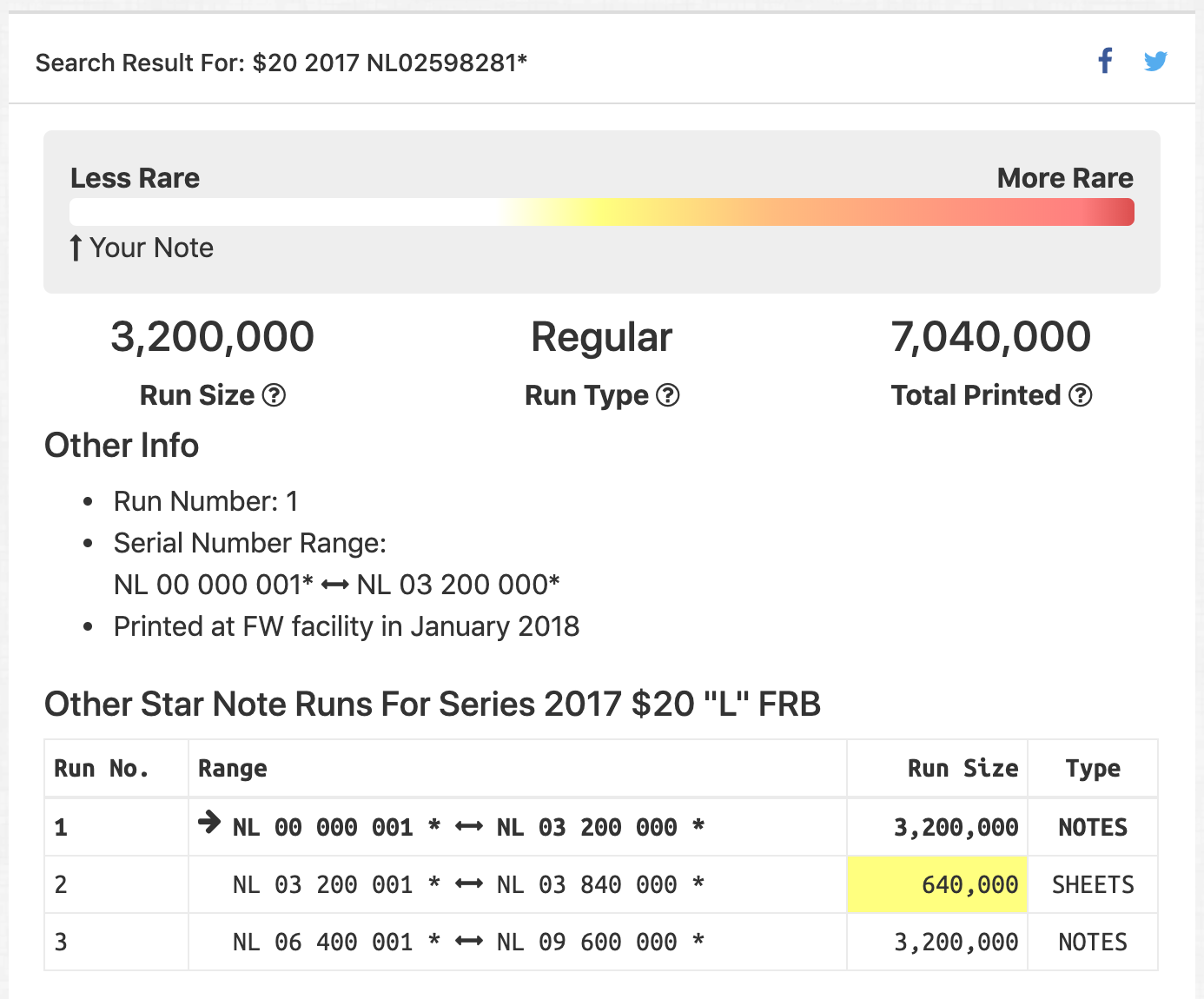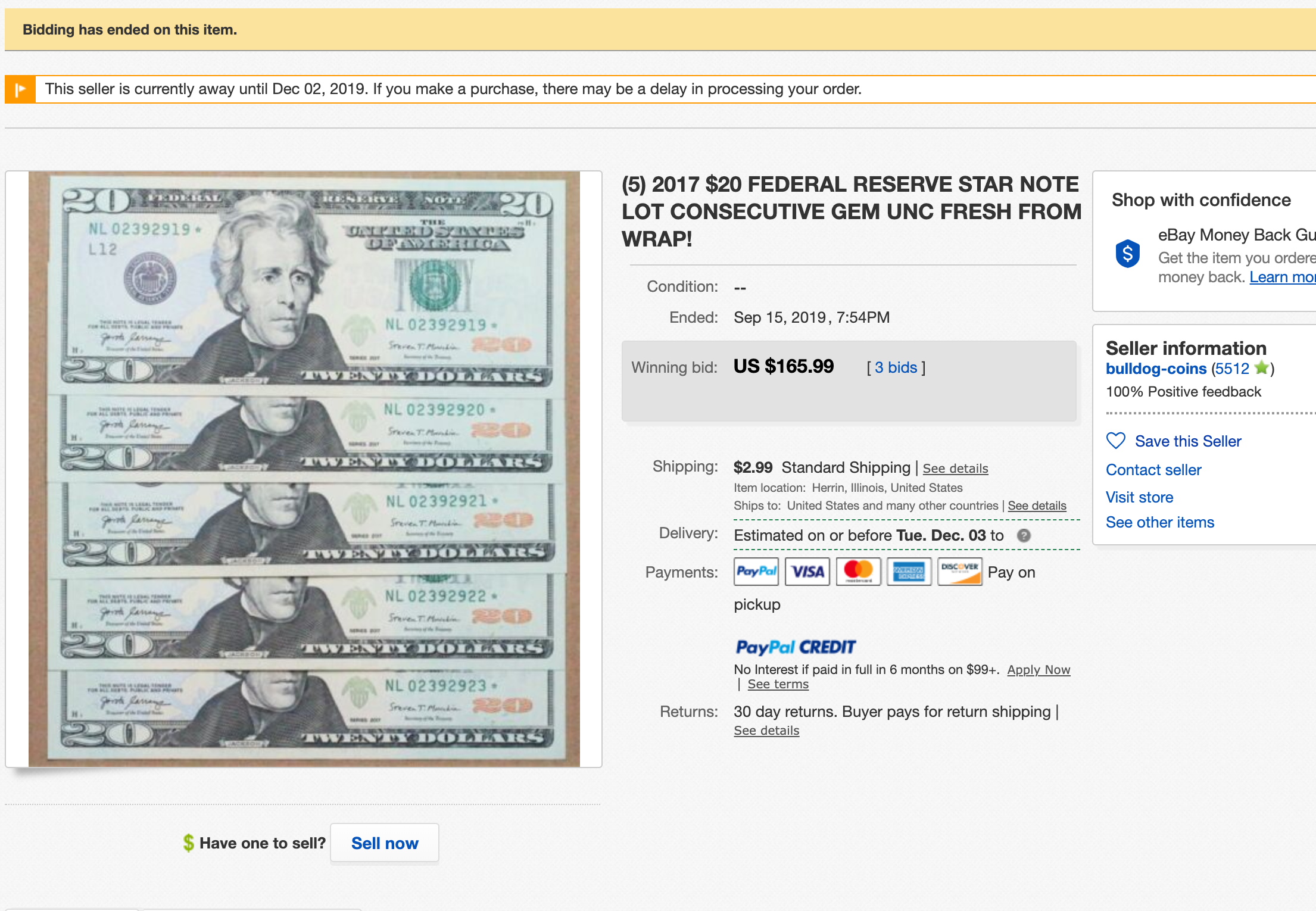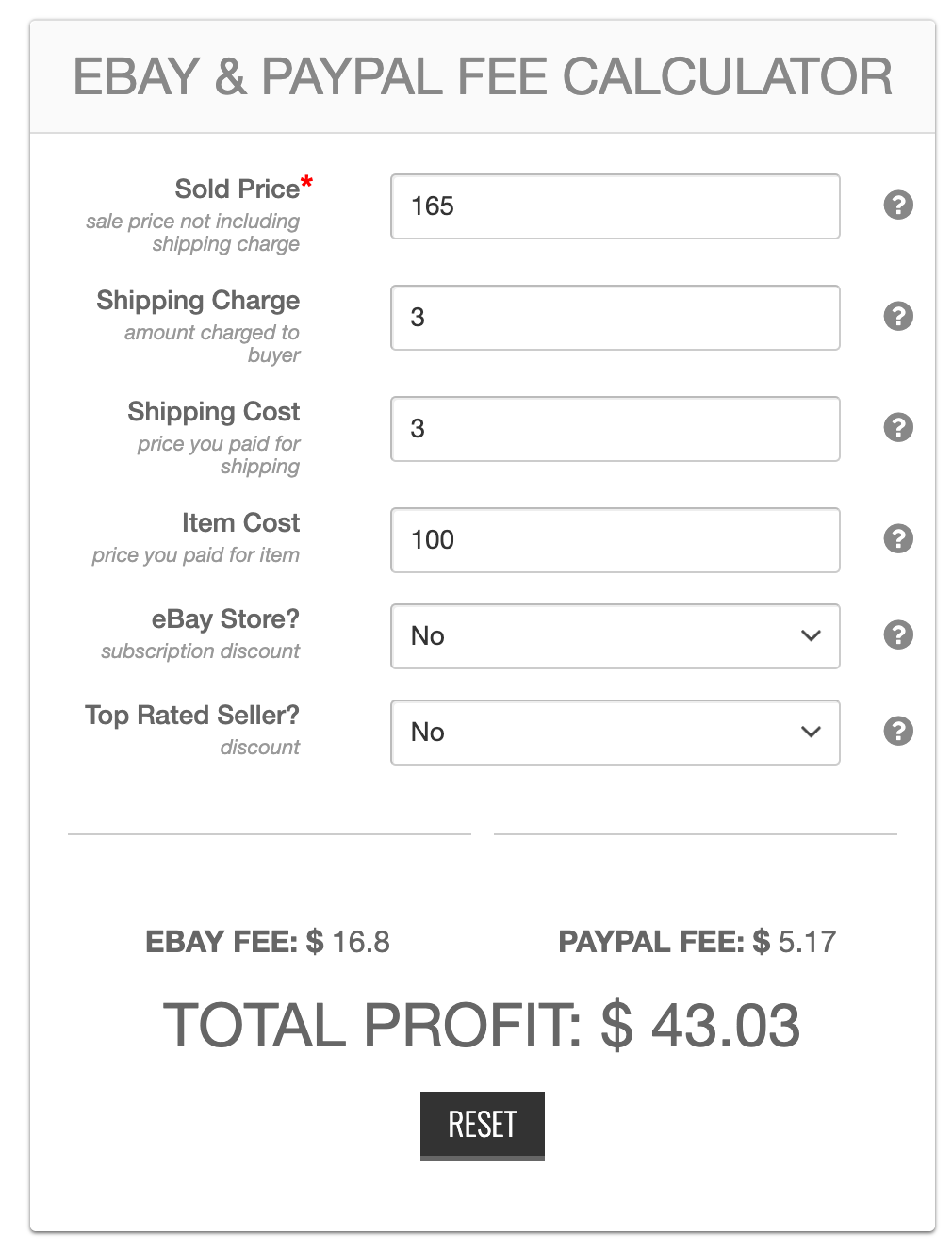Case Study: 30 Consecutive 2017 $20 Star Notes
I get an enormous amount of emails asking "what is my note worth?" It takes a lot of thought to answer that question. I'd like to start answering some of these questions here on the blog so everyone can learn together. Here's the first one:
Hi Dave, my wife went to the ATM this morning and received 600 hundred dollars worth of 20 dollar star notes. All new and consecutive serial numbers. Series 2007 never been folded and I don't even know where to start checking on what to do with them.
If you're going to ask about a note's value, you need to include ALL information possible and make sure it is correct: denomination, series, serial numbers, condition, etc. Send a few pictures if possible.
Since there is no series 2007, I asked for clarification and found out the notes are series 2017 with serial numbers NL02598247* to NL02598281*. With that information we can dig in to find out what it is worth.
First, since these are star notes we need to determine the production numbers from the Star Note Lookup. The SNL shows these notes are from run number 1 which is a full run of 3.2 million notes. As of November 2019, there were 3 runs of star notes of $20 2017 San Francisco FRB "L" FRB. Run 1: 3.2 million, Run 2: 640,000, Run 3: 3.2 million. Those numbers mean that this star note is by no means rare. There were a lot of them printed for the FRB, and it's not from a small run.

In this case the serial numbers are not fancy (check your serial number fancy-ness here) and the notes are not old. The best chance of these notes being worth more than face value is the fact that they're uncirculated and in consecutive order.
So now we go to eBay and try to find similar completed auctions. you can add this filter on the sidebar using "Show Only: Completed Items". Specifically, $20 series 2017 star notes from the San Francisco "L" FRB from either run #1 or run #3 since they're the same size. I searched for "$20 2017 star note" and scrolled through the completed auctions. After a few pages of looking, this is the most similar auction I found: (5) 2017 $20 FEDERAL RESERVE STAR NOTE LOT CONSECUTIVE GEM UNC FRESH FROM WRAP!.

This action completed on September 15, 2019 for $165.99 plus 2.99 shipping. That's a great starting point. Five of these notes sold for about $33 a piece.
Beware of eBay and PayPal Fees
eBay is not free to use. There is a fee calculator available here. In this auction, this is how the fees worked out:

Although the auction ended at $33 per note, the seller walked away with a profit of $43 - or $8.6 per note. So these notes effectively sold for $28.6 a piece.
It would be easy to think that 30 of them would sell for ($33 * 30) $990, but that would probably be wrong. It has to do with demand, which involves how collectors actually collect paper money. Many collectors only keep one specimen of each note of whatever set they are collecting. Maybe some will keep a few. There isn't much of a reason to sink nearly $1,000 into 30 consecutive $20 star notes. The demand for a bulk pack is much lower than individual notes or small groups.
If selling all 30 at once won't fetch the highest per-note value, what about the opposite approach - sell each of the 30 notes individually? If Terry found one or two of these star notes, selling individually might be the best approach. In my opinion, it is a bad approach for 30 individual notes:
- Consider the time it takes to manage 30 individual auctions
- Consider the shipping cost. Shipping a 30-pack for $5 = $0.17 per note. Shipping 30 notes individually for $3 each = $3 per note. Whether you or the buyer is absorbing that cost, it will affect the amount of money you walk away with.
- Consider supply vs demand. Currency collecting isn't that popular of a hobby. There is a limited number of people looking for certain notes at any time. Put all 30 notes on eBay as individual auctions and there could be more supply than demand. The auctions might end lower than if they were more scarce.
- If these auctions are spread out over a long period, what if someone else finds a large group of consecutive star notes from the same FRB or run? That could drastically reduce the demand and lower your auction results.
In my opinion, the best option is to do a mix of selling individual notes and multi-note packs - and spread the auctions over time. Maybe sell a 10-pack and see how it does compared to the reference auction. Did it sell for a lower per-note price? Maybe 5-packs is the way to go. Did it sell close to the same per-note price? Then maybe sell another 10-pack after a few weeks. Or list one or two individually and see how they do. If the auctions end high enough to offset the extra work and shipping costs, that could be a winning strategy.
It's up to you to find the balance between maximizing gains, selling the notes in a reasonable amount of time and effort, or deciding whether to keep some for 5, 10, 20 or more years to see if they gain value.